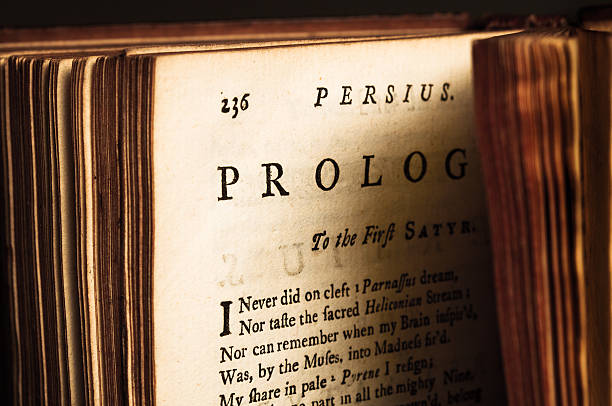How To Write A Prologue For A Romance Novel (10 Best Tips)
How To Write A Prologue For A Romance Novel
How To Write A Prologue For A Romance Novel: Embarking on the art of crafting a prologue for a romance novel is like stepping into the delicate dance of hearts, where the opening notes set the stage for an enchanting love story.
The prologue serves as the gateway, a carefully constructed prelude that beckons readers into a world of passion, anticipation, and emotional resonance.
In the realm of romance literature, where the heartbeat of human connection is paramount, the prologue becomes a canvas for setting the tone, introducing compelling characters, and weaving a tapestry of intrigue that captivates the imagination.
This guide delves into the intricacies of writing a prologue for a romance novel, exploring the nuances of character development, the art of foreshadowing, and the delicate balance between revelation and mystery, all in the pursuit of creating an unforgettable opening that ignites the flames of love within the reader’s heart.
How To Write A Prologue For A Romance Novel
Here’s a step-by-step process on How To Write A Prologue For A Romance Novel
Define the Purpose
Clearly establish the purpose of your prologue. In a romance novel, it could set the tone, introduce key themes, or provide crucial backstory.
Capture Attention
Craft a compelling hook to grab readers’ attention. Create intrigue or pose a question that entices them to continue reading.
Establish Setting
Describe the time and place where the story unfolds. Set the atmosphere to immerse readers in the romantic world you’re creating.
Introduce Main Characters
Introduce key characters in a way that sparks curiosity. Focus on their personalities, motivations, or initial circumstances.
Highlight Conflict or Tension
Foreshadow the central conflict or tension that will drive the romance plot. Give readers a glimpse into the challenges the characters will face.
Build Emotional Connection
Evoke emotions early on by exploring the characters’ feelings or dilemmas. Make readers care about what happens to them.
Create Intrigue
Drop hints or clues that leave readers wanting more. Encourage them to delve into the main narrative to uncover the mysteries introduced in the prologue.
Keep It Concise
Prologues should be relatively short. Aim for brevity while ensuring you convey essential information and engage the reader’s interest.
Maintain Consistency
Ensure the tone and style of the prologue align with the rest of the novel. Consistency helps create a seamless reading experience.
Leave an Impression
End the prologue with a memorable moment or revelation that lingers in the reader’s mind, encouraging them to dive into the main story for resolution.
Remember, these steps are guidelines, and the specific approach may vary based on the unique characteristics of your romance novel.

Understanding the Genre
In the intricate dance of storytelling, understanding the romance genre is like waltzing through a garden of emotions. It’s not merely about intertwining two hearts but orchestrating a symphony of passion, tension, and desire.
Imagine a canvas where every brushstroke is a heartbeat, and every plot twist resonates like a well-played chord. In the world of romance, anticipation hangs in the air, and each chapter is a love note waiting to be unfolded.
Unraveling the layers of this genre is akin to decoding the language of the heart, where emotions bloom like the most enchanting flowers in a carefully tended garden.
It’s a genre that beckons you to embark on a journey, not just between characters, but into the very essence of what it means to love and be loved.
Characteristics of Romance Novels
Romance novels are a literary haven where the heartbeat of human connection pulses through every page. At their core, these tales are defined by the dance of passion, weaving a tapestry of emotions that range from the sweet bloom of infatuation to the fiery intensity of true love.
Characters in romance novels are not merely players in a story but vessels for the exploration of vulnerability and strength, navigating the complex terrain of relationships.
Themes of resilience, self-discovery, and the magnetic pull of desire permeate the genre, offering readers a cathartic escape into a world where love is the central force propelling the narrative forward.
Whether set against the backdrop of historical elegance, contemporary allure, or fantastical realms, romance novels are timeless in their celebration of the most profound and universal human experience: the pursuit of love in all its beguiling forms.
Reader expectations in the romance genre
In the realm of romance literature, readers enter with an unwavering set of expectations, akin to embarking on a cherished voyage with an eagerly anticipated destination.
Central to these expectations is the promise of emotional resonance, a visceral connection to characters grappling with the complexities of love.
Romance enthusiasts anticipate a narrative where passion unfurls like petals, and the journey towards a happily-ever-after is paved with twists and turns that mirror the unpredictability of the heart.
Within the genre’s embrace, readers crave well-developed characters whose chemistry is palpable, and they anticipate a plot that navigates the labyrinth of emotions with finesse.
The promise of emotional satisfaction is a beacon guiding readers through the pages, fostering an unspoken contract between the storyteller and the avid romantic, where the ultimate reward lies in the cathartic experience of witnessing love triumph over adversity.
The role of a prologue in setting the tone for a romantic story
The prologue in a romantic narrative acts as the overture to a symphony of emotions, setting the stage with a delicate blend of intrigue, anticipation, and a hint of the enchanting journey that lies ahead.
It serves as a literary prelude, inviting readers into the secret realm of the story, where the echoes of love have yet to fully reveal themselves.
The role of a prologue in a romantic story is akin to the opening notes of a love ballad; it establishes the melody, introduces the key players, and hints at the emotional crescendos that will resonate throughout the novel.
By carefully crafting this initial glimpse, authors have the opportunity to immerse readers in the atmosphere, mood, and thematic essence of the romance, cultivating a connection that becomes the heartbeat of the entire narrative.
The prologue, like a whispered promise, beckons readers to venture forth into a world where love’s myriad shades are destined to unfold, ensuring that the first steps on this romantic journey are laden with the sweet anticipation of a captivating tale.

Planning the Prologue
Embarking on the journey of planning a prologue for a romance novel is akin to casting the first spell in a magical courtship. It is not just about sketching a prelude but orchestrating the opening chords of a symphony that will resonate through the reader’s soul.
In the realm of planning, authors wield the pens as sorcerers, choosing the alchemy of themes, the potion of perspectives, and the incantation of time and place.
This is the literary canvas where protagonists are conceived and destinies entwined, laying the foundation for a tale that will unravel the secrets of hearts.
Like architects sketching the blueprint of a castle for love, authors in the planning phase hold the power to shape the architecture of emotions, ensuring that every word resonates like the echo of a whispered promise, leaving readers captivated and yearning for the enchanting chapters that lie ahead.
Crafting Compelling Characters
In the alchemical crucible of romance, crafting characters isn’t merely a literary endeavor; it’s a delicate dance of hearts on the page.
Each character is not a mere figure but a symphony of quirks, flaws, and virtues, a kaleidoscope of emotions waiting to be unfurled.
In the crucible, protagonists emerge as love’s champions, and their chemistry becomes the elixir that bewitches readers.
Crafting compelling characters in a romance novel is akin to sculpting from the clay of human experience, where every nuance, every hesitation, and every passionate sigh contribute to the masterpiece of emotional resonance.
These characters are not mere ink and paper; they are vessels of desire, conduits through which readers vicariously experience the intoxicating highs and heart-wrenching lows of love.
As the pen wields the power to breathe life into them, characters become the protagonists not just of a story but of the reader’s own romantic odyssey, ensuring that their journey becomes an unforgettable dance in the reader’s imagination.
Introducing the protagonist and love interest
In the grand overture of a romance novel, the introduction of the protagonist and their amorous counterpart is akin to the unveiling of stars on a moonlit night—each one carrying its unique glow, destined to collide in a celestial dance.
The protagonist, a tapestry of dreams, fears, and aspirations, steps onto the stage of the narrative, a beacon of relatability and empathy.
Alongside them enters the love interest, a counterpart painted in the hues of mystery and allure, their presence sparking the kindling of anticipation.
It’s a delicate choreography, as the author delicately weaves the threads of individuality and shared destiny, creating a dance of hearts that readers can’t help but join.
The introduction of these two figures is not merely a meeting; it’s a rendezvous that sets the scene for the symphony of emotions about to unfold, promising a narrative where the echoes of their connection will resonate long after the final chapter has been read.
Creating emotional connections with readers
Creating emotional connections with readers in a romance novel is an art that transcends words, transforming ink on paper into a conduit for shared feelings.
It’s about crafting characters whose vulnerabilities mirror the readers’ own, inviting them to traverse the labyrinth of emotions together. Authors become emotional architects, using the bricks of relatable experiences and mortar of genuine sentiment to construct a bridge between the fictional and the heartfelt.
Through evocative prose, they invite readers not just to witness love’s journey but to partake in it, weaving a tapestry of shared smiles, tears, and heart-flutters.
It’s a delicate dance where the author’s pen becomes a mirror reflecting the readers’ own hopes, fears, and desires, creating a connection so palpable that the characters’ triumphs and tribulations resonate as echoes of the readers’ own romantic escapades.
In this intricate dance of empathy, the novel transcends its pages, becoming a shared experience where emotions cease to be confined to the narrative; they become a shared heartbeat between author and reader.

Foreshadowing character development in the main storyline
In the delicate art of foreshadowing character development within the main storyline of a romance novel, authors become literary soothsayers, subtly hinting at the transformative arcs that await their protagonists.
It’s like scattering breadcrumbs through the narrative, providing readers with tantalizing glimpses of the profound metamorphosis each character is destined to undergo.
Through nuanced hints, subtle gestures, or enigmatic encounters, authors unfurl the roadmap of emotional evolution, allowing readers to anticipate the crescendo of personal growth and self-discovery.
These foreshadowed moments act as whispers of destiny, building an intricate tapestry of expectations that enhances the reader’s engagement and investment in the characters’ fates.
Like a well-played melody with recurring motifs, foreshadowing in a romance novel serves as the compass guiding readers through the labyrinth of emotions, promising a payoff that is not just cathartic but deeply resonant with the echoes of character evolution seeded earlier in the narrative.
Building Intrigue and Tension
In the realm of romance storytelling, crafting intrigue and tension is akin to weaving a spell that binds readers to the narrative, transforming each page into a thrilling tapestry of emotions.
It’s the delicate dance of hearts veiled in uncertainty, a tantalizing push and pull that mirrors the complexity of love. Authors become architects of suspense, constructing bridges of anticipation that lead to the climactic crescendo of emotional revelation.
Whether through clandestine glances, unspoken desires, or the simmering undercurrents of passion, building intrigue and tension is a seductive art that propels the story forward.
Each twist in the narrative is a well-timed heartbeat, and every revelation is a brushstroke on the canvas of desire.
The reader, caught in this web of mystery, becomes an eager accomplice, turning pages with bated breath, propelled by the promise of unraveling secrets and the ultimate gratification of a love that defies the odds.
Using mystery and suspense to engage readers
In the captivating dance of romance storytelling, employing mystery and suspense is akin to weaving an intricate cloak of allure around the narrative.
Like a master illusionist, authors beckon readers into a realm where every page is a veiled enigma, concealing tantalizing secrets and unforeseen twists.
The artistry lies in strategically withholding answers, leaving breadcrumbs of uncertainty that propel readers forward with a thirst for revelation.
As the plot thickens with unresolved questions and unspoken desires, the reader becomes an eager detective, unraveling the tapestry of mystery alongside the characters.
The infusion of suspense elevates the emotional stakes, transforming the ordinary into the extraordinary, and the expected into the unforeseen.
In this delicate balance, the author becomes a literary puppeteer, orchestrating a symphony of curiosity that compels readers to navigate the labyrinth of the narrative, anticipating not just the resolution of the plot but the unveiling of love’s most compelling secrets.
Connecting the prologue to the overarching plot
Linking the prologue seamlessly to the overarching plot of a romance novel is akin to weaving the threads of destiny into a narrative tapestry.
The prologue serves as the tantalizing prologue, a glimpse into the heartbeat of the story yet to unfold. Its resonance, like an echo through time, resonates with the essence of the broader plot, laying the groundwork for the grand symphony of emotions that will ensue. Each element introduced in the prologue becomes a narrative compass, guiding readers through the labyrinth of love and conflict.
As the story progresses, readers find themselves deciphering the echoes of the prologue within the unfolding chapters, creating a sense of cohesion and anticipation.
This literary choreography ensures that the prologue isn’t merely a standalone piece but an integral chapter in the larger love story, offering a harmonious connection between the past and the present, the known and the unknown, and the prologue and the crescendo of the overarching plot.
Setting the Scene
In the realm of romance novels, setting the scene is not a mere stage-setting exercise; it’s a painter’s stroke across the canvas of emotions, a seductive invitation into a world where love unfurls like petals in a sunlit garden.
Authors become architects of atmospheres, choosing every detail with precision to craft a backdrop that resonates with the pulsating heartbeat of their narrative.
It’s not just about describing a place; it’s about invoking the very soul of a setting, whether it be a bustling cityscape, the tranquil embrace of nature, or the mysterious allure of a historical backdrop.
The scene isn’t just a backdrop; it’s a silent character, influencing the rhythm of hearts and setting the stage for passions to unfold.
In this dance between words and imagination, setting the scene is a masterstroke that immerses readers in a sensory experience, making them not just witnesses but active participants in the symphony of love that is about to unfold.
Describing the physical environment
In the tapestry of a romance novel, describing the physical environment transcends mere words; it’s an art of immersion, a sensory journey that transports readers to a world where the setting is as alive as the characters themselves.
The physical environment becomes a silent maestro, conducting the symphony of emotions, whether it’s the ethereal glow of a moonlit garden or the bustling vibrancy of an urban backdrop.
Authors, wielding pens as brushes, paint landscapes with strokes of vivid detail, inviting readers to feel the warmth of sun-kissed meadows or the cool embrace of a gentle breeze.
Every nuance, from the tactile textures to the ambient sounds, contributes to the atmospheric ballet that envelops the characters.
It’s not merely about describing a place; it’s about creating a living, breathing backdrop that intertwines with the emotional beats of the story, ensuring that readers don’t just observe but feel the very pulse of the environment that becomes an integral part of the romantic odyssey.
Establishing the atmosphere and mood
In the delicate dance of romance storytelling, establishing the atmosphere and mood is akin to conjuring the very air that characters breathe—an ethereal blend that shapes emotions and guides the reader’s senses.
The atmosphere becomes a silent narrator, setting the emotional tone with each turn of the page. Whether it’s the hushed intimacy of a candlelit dinner, the charged tension of a clandestine meeting, or the effervescent joy of a sunlit garden, authors craft atmospheres as visceral as the beating hearts of their characters.
Through evocative prose, they infuse the narrative with an intangible ambiance—a heady mixture of anticipation, passion, or melancholy.
The mood becomes a brushstroke across the emotional canvas, dictating the rhythm of the tale.
It’s a literary alchemy where the author, like a maestro, orchestrates a symphony of feelings, ensuring that readers not only witness the love story but are enveloped by the very air of the world where love unfolds its nuanced melodies.
Incorporating sensory details to enhance the reader experience
In the enchanting tapestry of a romance novel, incorporating sensory details is the secret elixir that transforms mere words into a rich, immersive experience.
It’s the art of weaving a spell that transcends the visual, inviting readers to feel the soft caress of a lover’s touch, hear the whispers of an evening breeze, taste the bittersweet tang of longing, and inhale the intoxicating fragrance of blooming romance.
Through meticulous attention to sensory nuances, authors create a literary banquet where every emotion is a dish served with the finesse of a seasoned chef.
The crunch of leaves underfoot, the velvety warmth of a shared gaze, the melody of raindrops on a window—each detail is a brushstroke that paints a vivid masterpiece.
By beckoning the reader into a world where sensations are as palpable as emotions, authors ensure that their love stories are not merely read but felt, creating an immersive journey where the senses become intimate companions in the exploration of romance.

Balancing Information and Intrigue
Balancing information and intrigue in the delicate choreography of a romance novel is akin to walking a tightrope suspended between revelation and mystery.
It’s a dance where every step reveals just enough to tantalize the reader’s curiosity, keeping them teetering on the edge of discovery.
Like a skilled illusionist, authors unveil key details with precision, weaving a narrative that unravels the enigma while leaving room for imagination to flourish.
It’s the art of selective revelation, where each piece of information acts as a puzzle piece, enticing readers to connect the dots and piece together the overarching story. Too much information too soon risks dispelling the magic, while too little may leave readers adrift in uncertainty.
It’s a narrative balancing act that ensures the reader is an active participant, engaged in a dance of revelation and concealment, where the allure of the unknown propels them forward, eagerly turning pages to uncover the secrets embedded in the heart of the romance.
Providing necessary backstory without overwhelming the reader
In the intricate dance of storytelling, providing necessary backstory in a romance novel is a delicate art, much like sprinkling stardust that enhances rather than eclipses the celestial narrative. Authors act as custodians of information, judiciously revealing glimpses of characters’ pasts to illuminate their present and future.
It’s a harmonious balance between disclosure and discretion, where the backstory is unveiled like a well-kept secret, adding layers of depth without overshadowing the unfolding romance.
Like skilled architects, authors ensure that every detail serves a purpose, enriching the reader’s understanding without burdening them with unnecessary weight. By providing just enough breadcrumbs of history, authors invite readers to embark on the journey of discovery, forging a connection with characters that feels earned rather than imposed.
In this artful dance, the past becomes not an anchor but a compass, guiding the narrative with the subtle grace required to keep the romance vibrant and the reader entranced.
Writing Style and Tone
In the grand tapestry of romance novels, the writing style and tone are not mere ink on paper; they are the pulse that orchestrates the heartbeat of emotions.
Crafting a symphony of words is like painting with the hues of passion, each sentence a stroke that captures the ebb and flow of love.
The writing style becomes a dance, whether it’s the lyrical prose that mimics the soft rustle of leaves in a breeze or the sharp staccato of dialogue echoing the pulse of a heated exchange.
The tone, akin to the brush of a skilled artist, sets the emotional temperature, whether it’s the gentle warmth of a tender moment or the electric charge of an impending revelation.
Authors become maestros of language, infusing their narrative with a cadence that mirrors the beating hearts of their characters.
It’s not just about telling a story; it’s about crafting an immersive experience where every word is a note, and every page resonates with the lingering melody of a love story well-told.
Maintaining a balance between lyrical and accessible prose
Maintaining a delicate equilibrium between lyrical and accessible prose in a romance novel is akin to navigating the enchanting dance of the sublime and the relatable.
The words become a poetic ballet, gracefully weaving intricate patterns that elevate the narrative into a realm of beauty and emotion. Yet, within this lyrical choreography, lies the importance of accessibility—a bridge connecting the ethereal to the familiar.
Authors tread the line between the eloquent and the approachable, ensuring that the prose resonates with the hearts of readers without sacrificing the enchantment of language.
The balance is a symphony, where each note of vivid description harmonizes with the reader’s imagination, creating a tapestry of emotions that is both richly textured and universally relatable.
In this delicate interplay, the prose becomes a conduit for the magic of storytelling, where the sublime and the accessible coalesce to craft a love story that transcends the boundaries of language and resonates with readers on a deeply personal level.
Creating a tone that aligns with the overall mood of the novel
Crafting a tone that harmonizes with the overarching mood of a romance novel is akin to composing a melody that resonates through every chapter, creating a narrative symphony that lingers in the reader’s heart.
The tone becomes the atmospheric hue, painting the emotional landscape with hues that mirror the highs and lows of the unfolding love story.
Whether it’s the tender brushstrokes of a heartwarming connection or the bold strokes of heightened passion, authors orchestrate a tonal palette that immerses readers in the prevailing emotions of each moment.
A skillful use of language and pacing ensures that the tone aligns seamlessly with the narrative, evoking laughter, tears, or a fluttering of the heart in perfect synchrony with the story’s cadence.
It’s a masterful storytelling technique where the tone acts as a guiding force, inviting readers to not just read the words but to feel the pulsating rhythm of the romance unfolding before them.
Revision and Refinement
In the alchemical process of revision and refinement, a romance novel transforms from a raw manuscript into a polished gem, each edit akin to chiseling away the excess to reveal the true brilliance within. It’s a dance with one’s own words, a meticulous choreography where authors don the dual hats of creator and critic.
The process isn’t just about fixing; it’s about elevating the narrative to its highest potential, refining the symphony of emotions until it resonates with perfect clarity.
Like a sculptor carving details into marble, authors chip away at superfluous elements, ensuring that every sentence is a note in the harmonious composition of their love story.
The pen becomes a brush, smoothing out rough edges and adding nuanced strokes until the prose sparkles with an irresistible allure.
In this transformative journey, revision isn’t a burden but a liberating act, allowing authors to sculpt their literary creation into a masterpiece that doesn’t just tell a tale but sings it, leaving readers captivated by the finely tuned resonance of romance.
Frequently Asked Questions (FAQ) about How To Write A Prologue For A Romance Novel
Why should a romance novel include a prologue?
A prologue in a romance novel serves as a literary overture, enticing readers with a sneak peek into the emotional landscape of the story. It sets the stage, establishing the tone, introducing key themes, and creating a compelling foundation for the love story that unfolds.
What elements should be considered when planning a prologue for a romance novel?
When planning a prologue, delve into the central themes and conflicts of your romance tale. Consider the timing and setting carefully, ensuring they align with the overarching narrative. Choose the right point of view to evoke the desired emotional impact and foreshadow character development without giving away too much.
How do you craft characters that will resonate in a prologue?
Crafting compelling characters in a prologue involves creating a magnetic connection between the protagonists. Introduce their personalities, desires, and conflicts in a way that sparks curiosity. Foreshadow their development in the main storyline, making readers eager to witness the evolution of these characters throughout the novel.
What role does intrigue and tension play in a prologue for a romance novel?
Intrigue and tension are the architects of engagement. They compel readers to journey deeper into the narrative by introducing central conflicts, mysterious elements, or unresolved questions. Balancing these elements in a prologue is key, ensuring readers are captivated without feeling overwhelmed.
How can sensory details enhance a prologue in a romance novel?
Sensory details act as the palette for painting an immersive scene. Incorporate evocative descriptions that appeal to the reader’s senses—touch, taste, smell, sight, and sound. This enriches the reading experience, making the prologue a vivid, memorable introduction to the world of your romance novel.
What’s the significance of maintaining a balance between lyrical and accessible prose in a prologue?
Maintaining this balance is crucial to ensure that the prose resonates emotionally while remaining accessible to a diverse audience. Lyrical elements add beauty and depth, while accessible prose ensures readers connect with the story on a personal level, forging a deeper emotional bond.
Why is revision and refinement essential for a prologue in a romance novel?
Revision and refinement transform the prologue from a raw concept into a polished gem. Each edit hones the narrative, clarifies the emotional resonance, and fine-tunes the language. It’s a transformative process that elevates the prologue to its utmost potential, ensuring it seamlessly integrates with the overarching love story.
How does a prologue contribute to establishing the tone of a romance novel?
The prologue acts as a tone-setter, influencing the emotional climate of the entire novel. By carefully choosing language, pacing, and thematic elements, the prologue creates an atmospheric backdrop that aligns with the overarching mood, promising readers an immersive journey into the heart of romance.
Conclusion
In the conclusion of How To Write A Prologue For A Romance Novel, the journey is a symphony of creativity, emotion, and anticipation.
The prologue serves as the gateway, inviting readers into a world where love unfolds like a captivating melody. From carefully planning the elements of intrigue and character development to the delicate art of balancing lyrical prose with accessible language, the process is a nuanced dance.
Sensory details and atmospheric tones paint a vivid backdrop, while revision and refinement transform the prologue into a polished gem.
As authors navigate this literary odyssey, the prologue becomes more than an introduction; it becomes the heartbeat of the romance, a promise to readers that the unfolding story will be a tapestry of emotions, mysteries, and unforgettable moments.
In mastering the craft of writing a prologue for a romance novel, authors embark on a journey to not only tell a love story but to immerse readers in an enchanting experience that resonates long after the final chapter.






